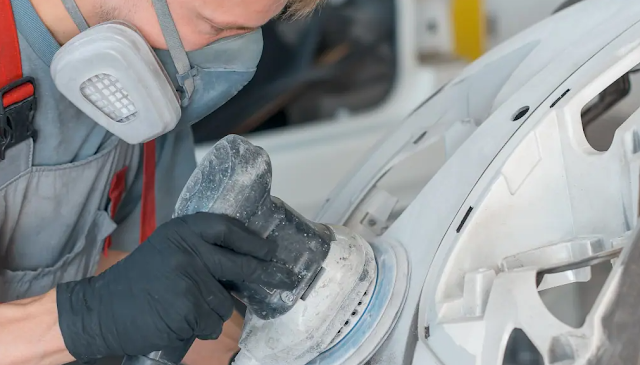Collision Repair Services in Sydney – Lewisham Smash Repairs
What is the meaning of collision repair?
Collision repair refers to the process of repairing a vehicle that has been damaged in a collision or accident. This type of repair work is typically carried out by skilled technicians or auto mechanics who specialize in repairing vehicles that have sustained various forms of damage, such as dents, scratches, and structural damage, due to a collision.
Collision repair involves several steps, including assessing the extent of the damage, disassembling the damaged parts, repairing or replacing the damaged components, refinishing the repaired parts to match the rest of the vehicle, and reassembling everything to restore the vehicle to its pre-accident condition. The goal of collision repair is not only to restore the vehicle’s appearance but also to ensure its structural integrity and safety, so it meets the necessary safety standards and functions properly on the road.
Collision repair shops use a variety of tools, techniques, and materials to repair vehicles, and technicians often receive specialized training to handle different types of repairs and various makes and models of vehicles. Insurance companies may also be involved in the collision repair process, especially if the repairs are covered by an insurance policy.
How do you repair a collision?
Repairing a vehicle after a collision involves a series of steps to assess, dismantle, repair, refinish, and reassemble the damaged parts. Here’s a general overview of the process:
- Assessment:
- The first step is to assess the damage. This can be done visually and with the help of diagnostic tools to understand both the visible and hidden damages.
- An estimator or technician evaluates the extent of the damage and determines the necessary repairs.
- Dismantling:
- Damaged parts are removed. This can include external parts like bumpers and fenders, as well as internal components, to assess the underlying structural damage.
- During this phase, technicians identify parts that can be repaired and those that need to be replaced.
- Structural Repair:
- If there’s structural damage, specialized tools and equipment are used to reshape the frame or chassis back to its original specifications.
- Technicians use computerized measuring systems to ensure the vehicle’s frame is aligned correctly.
- Body Repair:
- Dented or damaged body panels are repaired. Skilled technicians use various techniques, including dent pulling, to reshape metal panels.
- For parts that can’t be repaired, replacements are sourced.
- Painting and Refinishing:
- Repaired or replaced parts are prepared for painting. This involves priming, sanding, and ensuring a smooth surface.
- Paint matching is crucial to maintain the vehicle’s original appearance. Experienced technicians mix paints to match the color of the existing vehicle.
- Multiple layers of paint (base coat, clear coat) are applied, and the refinished parts are polished to achieve a seamless look.
- Reassembly:
- Once the paint has dried and the refinished parts are ready, the vehicle is reassembled.
- All parts, internal and external, are put back together according to the manufacturer’s specifications.
- Quality Control and Testing:
- The repaired vehicle undergoes quality control checks. This can include alignment checks, safety inspections, and test drives to ensure everything is functioning correctly.
- Any issues found during these tests are addressed before the vehicle is returned to the owner.
- Documentation and Billing:
- Detailed records of the repairs and the parts used are documented. This information is often provided to the vehicle owner and the insurance company.
- The final bill is prepared, detailing the cost of parts, labor, and other services provided during the repair process.
It’s important to note that collision repair should ideally be performed by certified technicians in a reputable auto body shop. Additionally, some repairs, especially those related to safety-critical components, might require specific certifications and inspections to ensure the vehicle meets safety standards and regulations.


Comments
Post a Comment